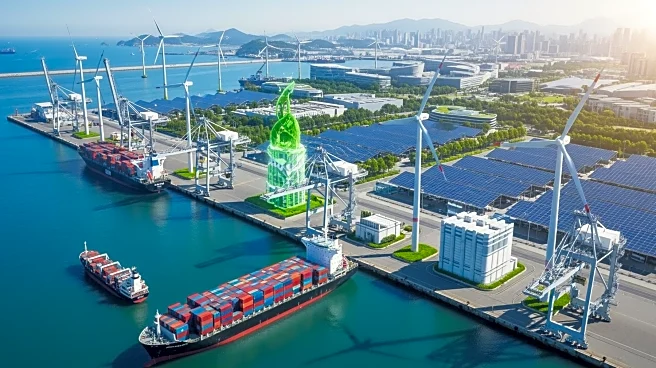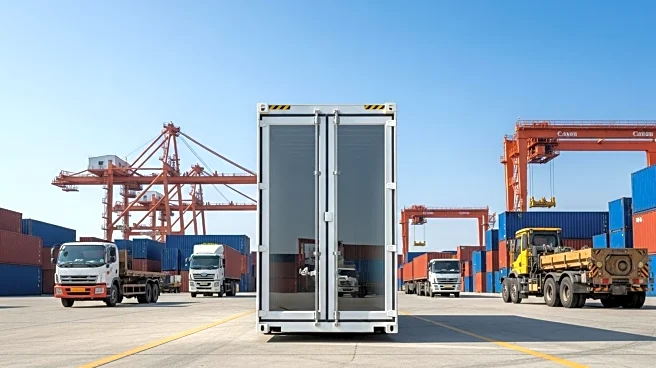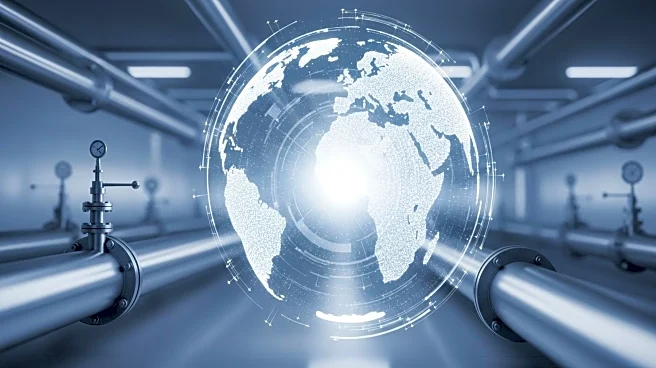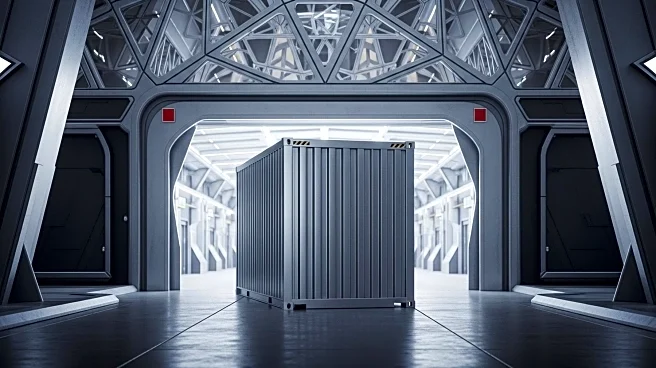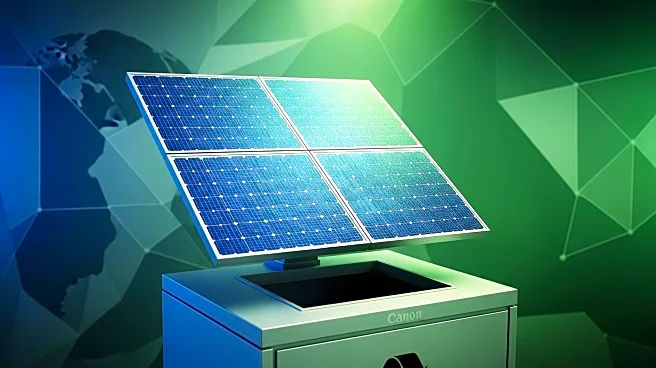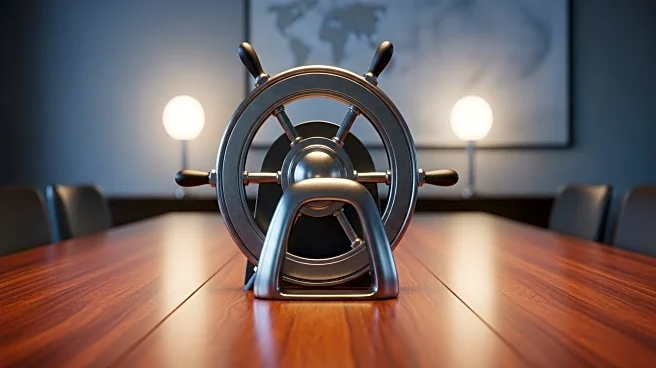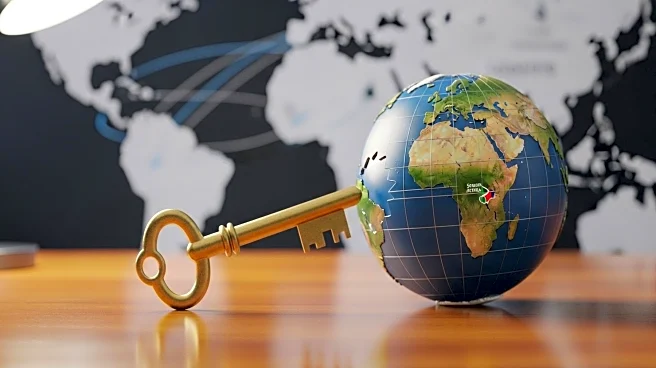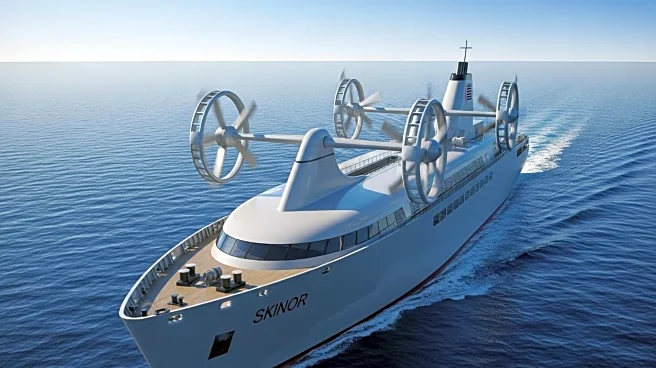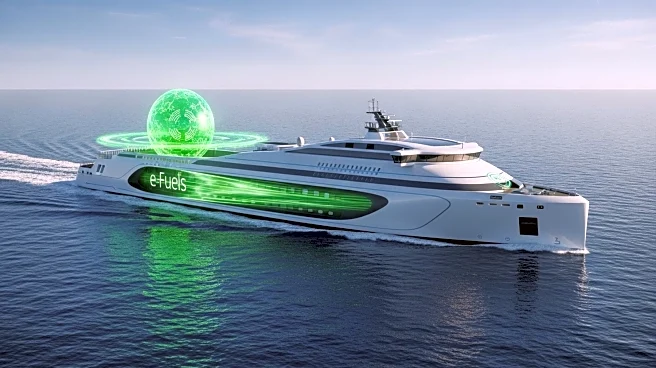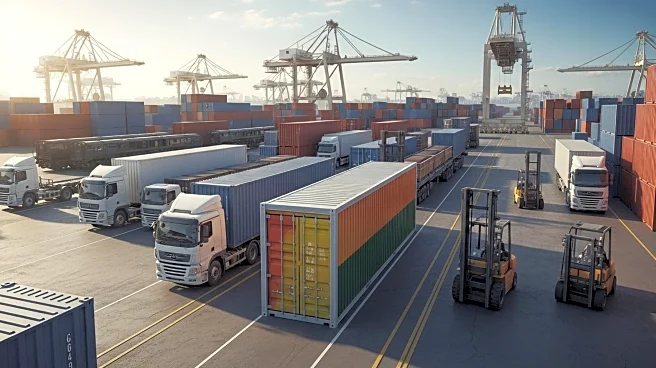What's Happening?
Maersk, a leading container shipping line, and CATL, the world's largest battery maker, have announced a strategic partnership aimed at decarbonizing logistics, port operations, and supply chains. This
collaboration, formalized on October 10, 2025, seeks to integrate advanced battery systems into port operations, transforming them into energy nodes rather than carbon chokepoints. The partnership builds on a previous agreement between CATL and Maersk's terminal subsidiary, APM Terminals, to electrify port equipment. By deploying large battery buffers, ports can manage energy loads more efficiently, allowing equipment to run on clean power without overloading the grid. This initiative is part of Maersk's broader strategy to reduce carbon emissions in shipping, complementing its investments in biofuels and methanol.
Why It's Important?
The partnership between Maersk and CATL represents a significant step in the maritime industry's efforts to reduce carbon emissions. Shipping has traditionally relied on cheap bunker fuel, making it one of the last sectors to embrace large-scale emission reductions. By electrifying port operations, the partnership aims to address local air-quality standards and long-term climate targets. The integration of battery systems not only supports cleaner port operations but also enhances the efficiency of ships during port approaches and hotel loads. This collaboration could set a precedent for other ports worldwide, potentially leading to widespread adoption of similar clean energy solutions in the logistics sector.
What's Next?
The initial focus of the Maersk-CATL partnership will likely be on ports with access to renewable electricity, such as those in Northern Europe. As the model proves successful, it could expand to Asia and North America, and even inland logistics hubs. The partnership aims to create a template for large-scale electrification, moving beyond pilot projects to replication across multiple locations. This could lead to ports becoming self-sustaining energy hubs, reducing dependency on new imports and fostering a circular economy through battery recycling and reuse.
Beyond the Headlines
The partnership highlights the potential for ports to become central to the clean energy system, rather than merely endpoints in the logistics chain. By integrating battery technology into maritime infrastructure, Maersk and CATL are redefining their roles in the industry. Maersk transitions from a shipping company to an energy integrator, while CATL gains a global platform to showcase its products. This shift could accelerate the maritime industry's transition to cleaner energy sources, influencing global trade practices and environmental policies.
